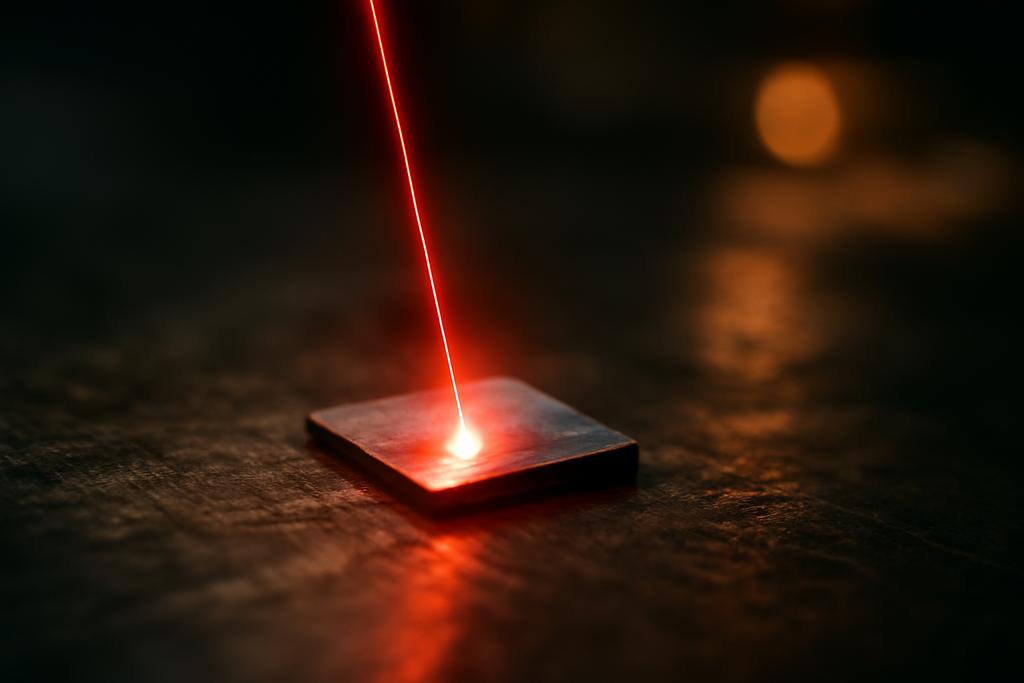A Dance of Light and Metal
Imagine a world where the lifespan of light itself could be controlled, stretched, and manipulated at will. This isn’t science fiction; it’s the fascinating realm of excitons, the ephemeral electron-hole pairs that hold the key to advancements in optoelectronics and quantum computing. A recent study from researchers at the University of Chicago and Harvard University, led by Alexander A. High and Philip Kim, offers a remarkable pathway to extend the lifetimes of these fleeting particles, potentially revolutionizing the way we interact with light.
The Fleeting Dance of Excitons
Excitons, found in two-dimensional materials like molybdenum diselenide (MoSe2), are like brief, shimmering sparks. They form when an electron absorbs energy, jumps to a higher energy level, leaving behind a “hole” in its original spot. This electron-hole pair is bound together by electrostatic forces, forming a quasiparticle, an exciton. But these beautiful light-emitting sparks are incredibly short-lived, vanishing in mere picoseconds—a trillionth of a second. Their incredibly short lifetime hinders their potential in technological applications. This fleeting existence limits their use in devices that rely on coherent control of light, such as lasers and quantum computers.
The challenge lies in extending the excitons’ lifespan enough to harness their potential. This is what High, Kim, and their colleagues tackled using a clever approach involving nanoscale engineering.
A Nanoscale Symphony: Engineering Exciton Lifespan
The researchers created a sophisticated nanoscale cavity, essentially a tiny, precisely tuned box, to contain the excitons. This cavity is constructed from a sandwich-like stack of materials: a bottom layer of silver, acting as a mirror, a layer of hexagonal boron nitride (hBN) and mica as insulators, the MoSe2 monolayer nestled in between, and finally, a top layer of silver, completing the cavity. This structure creates a Fabry-Pérot cavity, a type of optical resonator known for its ability to trap and amplify light.
The genius of their design lies in the cavity’s ability to manipulate the behavior of light emitted by the excitons. The specific thicknesses of the hBN and mica layers were carefully chosen, based on simulations, to suppress the radiative recombination of the excitons, which is the process by which the exciton decays and emits light. Think of it like silencing a particularly boisterous instrument in an orchestra. By suppressing the radiative pathway, the excitons’ lives are significantly extended.
More Than Just a Longer Life
The experiments yielded striking results. The researchers observed a significant decrease in the linewidth of the exciton and trion (a charged exciton) emissions. This narrowing is a direct consequence of the increased exciton lifetime—a longer life means a more precise, well-defined energy state. Furthermore, they noted a consistent blue-shift in the peak wavelength of the emission, a phenomenon linked to a cavity-induced cooperative Lamb shift, a quantum effect that modifies the energy levels of the excitons within the cavity.
Crucially, they confirmed the cavity’s role in the extended lifetime by etching away the top silver layer. The excitons immediately reverted to their shorter lifespan, proving that the cavity’s structure, not some other factor, was responsible for this transformation.
Unlocking the Potential of Dark Excitons
This research is not just about extending the life of existing excitons. It opens avenues for exploring “dark excitons,” which are excitons that don’t readily interact with light. These mysterious particles have been challenging to study but hold immense potential. The cavity design allows for the selective control of both bright (easily interacting with light) and dark excitons, bringing the latter into the realm of experimental investigation. The ability to control and enhance the emission of out-of-plane dipoles could be invaluable for studying dark excitons and potentially unlocking their technological potential.
Implications for Optoelectronics and Beyond
The ability to engineer exciton lifetimes has profound implications for the advancement of optoelectronic devices. Longer-lived excitons lead to more efficient light emission, potentially boosting the performance of LEDs and lasers. The control over exciton emission, including the wavelength and intensity, provides more options for device engineers. Moreover, the precise control over excitons opens up exciting possibilities in valleytronics, a field that harnesses the valley degree of freedom in materials for quantum information processing.
Imagine building quantum computers based on the behavior of excitons, where their extended lifetime translates to more stable and reliable quantum bits (qubits). The researchers themselves envision advancements in electrically controlled logic gates, enhancing the potential of these quantum technologies. The ability to control and extend the lifetimes of excitons and trions could lead to enhanced optical gain and lasing capabilities, paving the way for innovative optical devices.
A Tiny Box, Huge Implications
This work highlights the power of nanoscale engineering and the potential for manipulating the fundamental properties of light and matter. By designing a precisely engineered nanoscale cavity, the researchers have successfully extended the lifetime of excitons in MoSe2 by a significant margin. This achievement opens new pathways for developing advanced optoelectronic devices, exploring the mysteries of dark excitons, and potentially revolutionizing quantum technologies. The future of light may be a bit brighter, and a lot longer-lasting, thanks to this elegant piece of scientific innovation.










